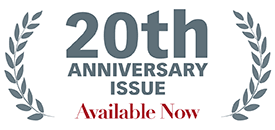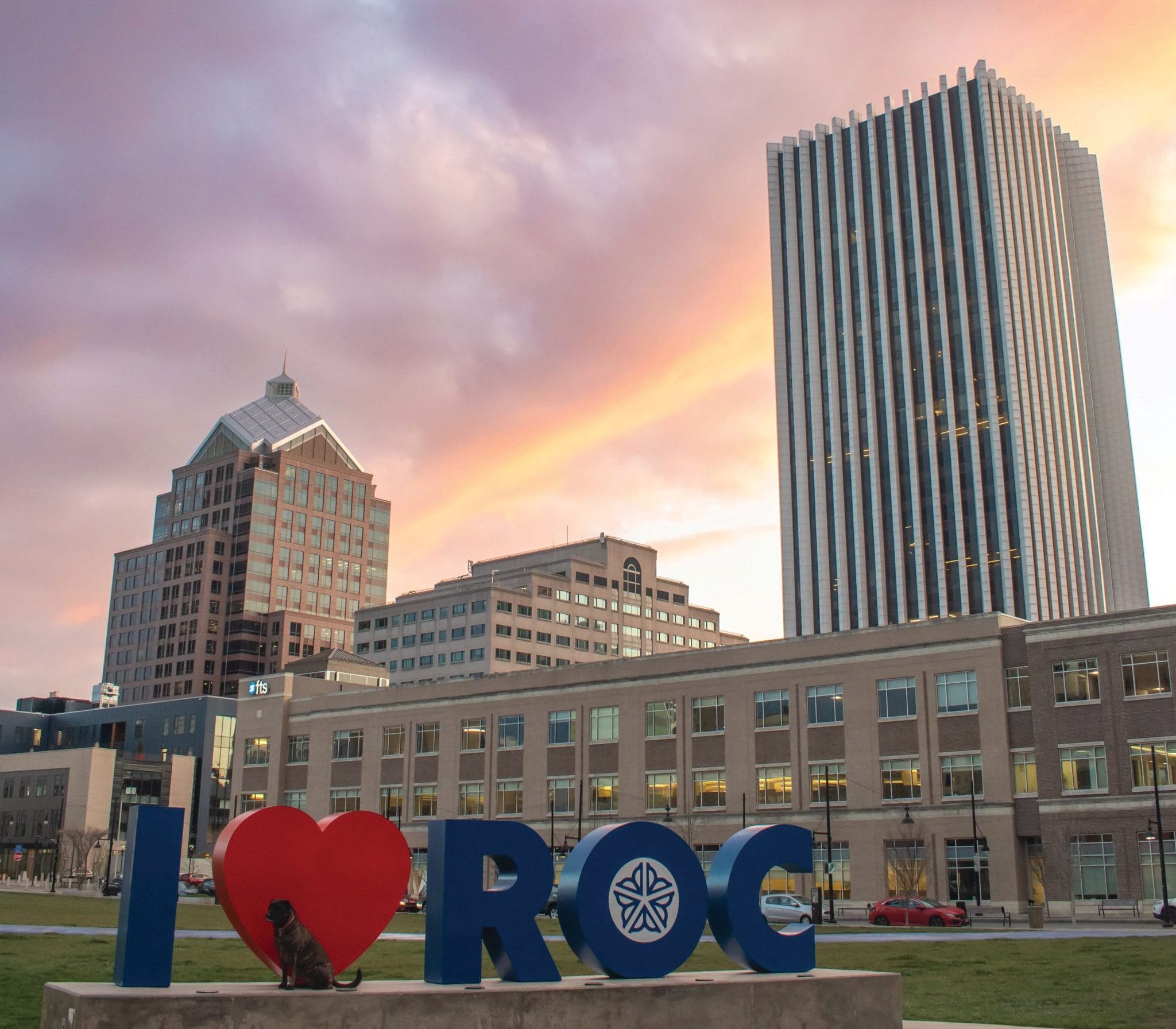
There’s something about riding on Amtrak that’s quintessentially American. This morning, I’m headed west on the Maple Leaf which makes its 12-hour run each day between Moynihan Train Hall in New York City and Union Station in Toronto (though it’s a quick seven-hour jaunt to Rochester). While I await our departure in my comfy seat, Taylor Swift’s “I Can Do It With A Broken Heart” plays from the platform. A young woman sitting behind me passionately debates her boyfriend over the phone on a sensitive subject, for everyone to hear. The thing about riding trains is that it always reminds us of our common humanity. And as I’m whisked away from Albany-Rensselaer Station on a sunny February morning, it feels like winter is about to break.
10am »My fellow passengers and I are following the original pioneer corridor that once linked the American Colonies to the Great Lakes and beyond. A natural passageway between the Catskill and Adirondack Mountains, the Mohawk River Valley was the epicenter of bloody battles during the French-Indian Wars. Our first stop, Schenectady (the Electric City) was sadly burned to the ground by the French and Native Americans in 1690
Beyond the General Electric sign which still burns bright on the horizon, we pass through forests, mountains and tiny towns at a steady 70mph. The frozen Mohawk River is full of jagged ice chunks, a silent testament to this modern wilderness. Each passing panorama soothes my soul as I’m carried away to places unknown. And the food in the café car was the sustenance I needed.
We stop periodically at a host of classically named Rust Belt cities with nicknames to suit their historical industry, including Amsterdam (the Carpet City), Utica (the Handshake City), Rome (the Copper City) and Syracuse (the Salt City). The train ride goes smoothly. The young women’s conversation ends with quiet acceptance. Soon, I’m transported far from home in mind, body and spirit.
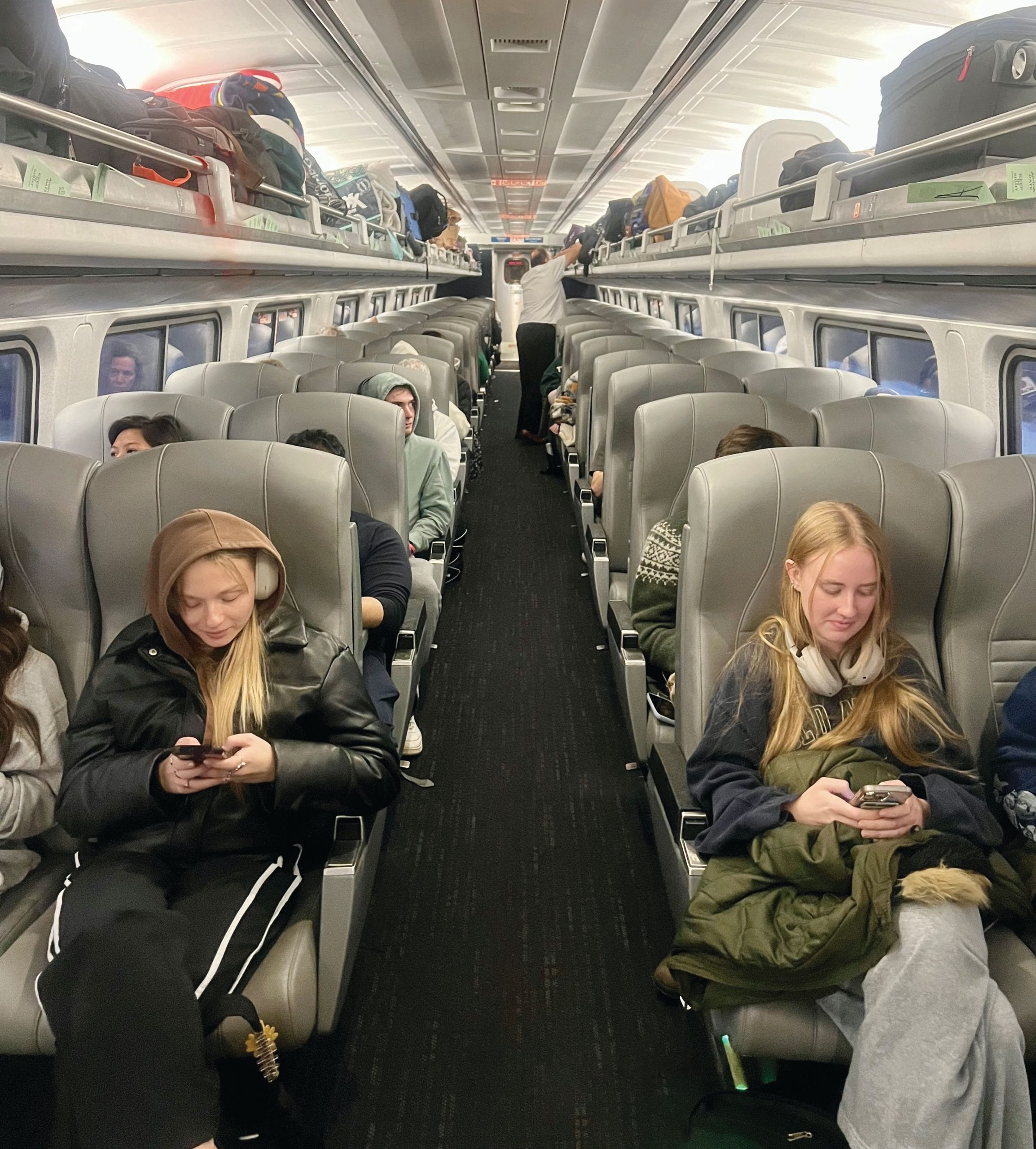
Noon » The landscape flattens as we emerge into the glacial plain of Western New York whose communities blossomed along the banks of the Erie Canal upon its completion in 1825. Due to its strategic location on the crossroads of the canal, the Genesee Riverand Lake Ontario, Rochester was once a major shipping port to the Western Frontier. Three major cataracts along the river offered perfect opportunities for hydroelectric power. With help from mother nature and the pursuits of man, Rochester became one of the United States’ first boom towns soonafter its founding in 1822. It was named after American Revolutionary War soldier, land speculator and slave owner Nathaniel Rochester.
By 1840, its population cleared 20,000. By 1890, it was 130,000. The rapid increase led to its first nickname: the Young Lion Of The West. However, it was soon better known for its flour mills which produced more than any place in the country. Nowadays, the Flour City has become the Flower City which hosts a famous ten-day Rochester Lilac Festival each May in this one-of-a-kind, four-season destination.
By 1950, Rochester’s population peaked at 332,000. While it waned during the deindustrialization period of the later 20th century, the past several decades have seen a resurgence of immigrants (particularly from Eastern Europe, Africa, East Asia and the Caribbean) making their home in this affordable, diverse and welcoming American metropolis. Rochester also has the largest per-capita deaf population of any city in the country thanks in part to the National Technical Institute For The Deaf. These days, Flower City claims 211,000 residents, while the greater Rochester region has more than a million, making it the third largest metropolitan area in New York State just behind Buffalo. Once you’re here, in Rochester, it certainly feels that way.
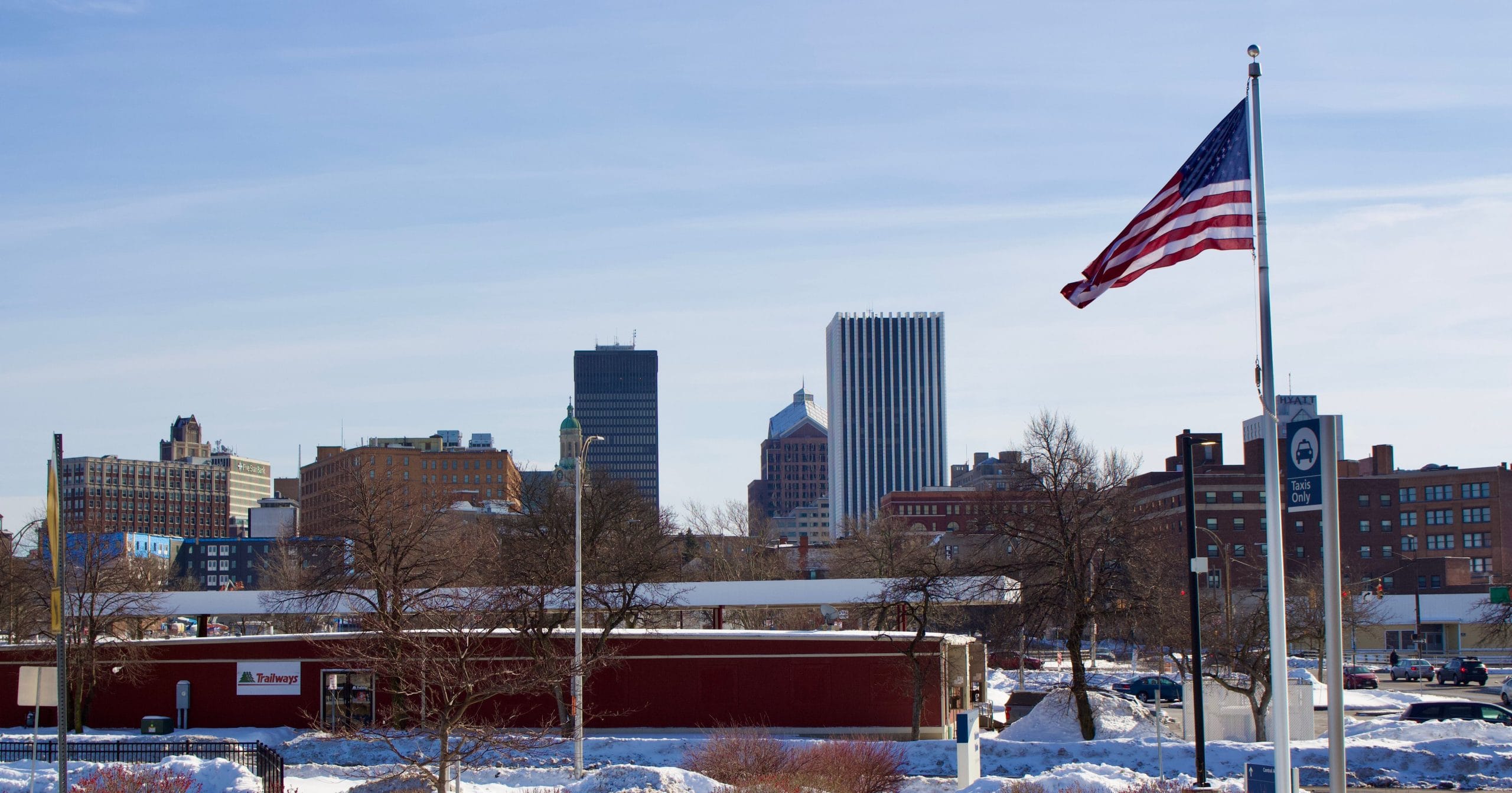
2:30pm » As we pull into the Louis M. Slaughter Station (named after the region’s 16-term US Representative), I’m surprised by just how big the city skyline appears. Not being from Western New York, this part of the world has an incomplete reputation for being somewhat of a very cold and snowy destination. But trust me, there’s a lot more going on here than weather.
As I exit the station, the sun is shining brightly. A cool steady wind billows an American flag flying high before the buildings. It’s a beautiful winter day and the snow banks piled high from an-above average winter have turned bashful in the warm, steady glow.
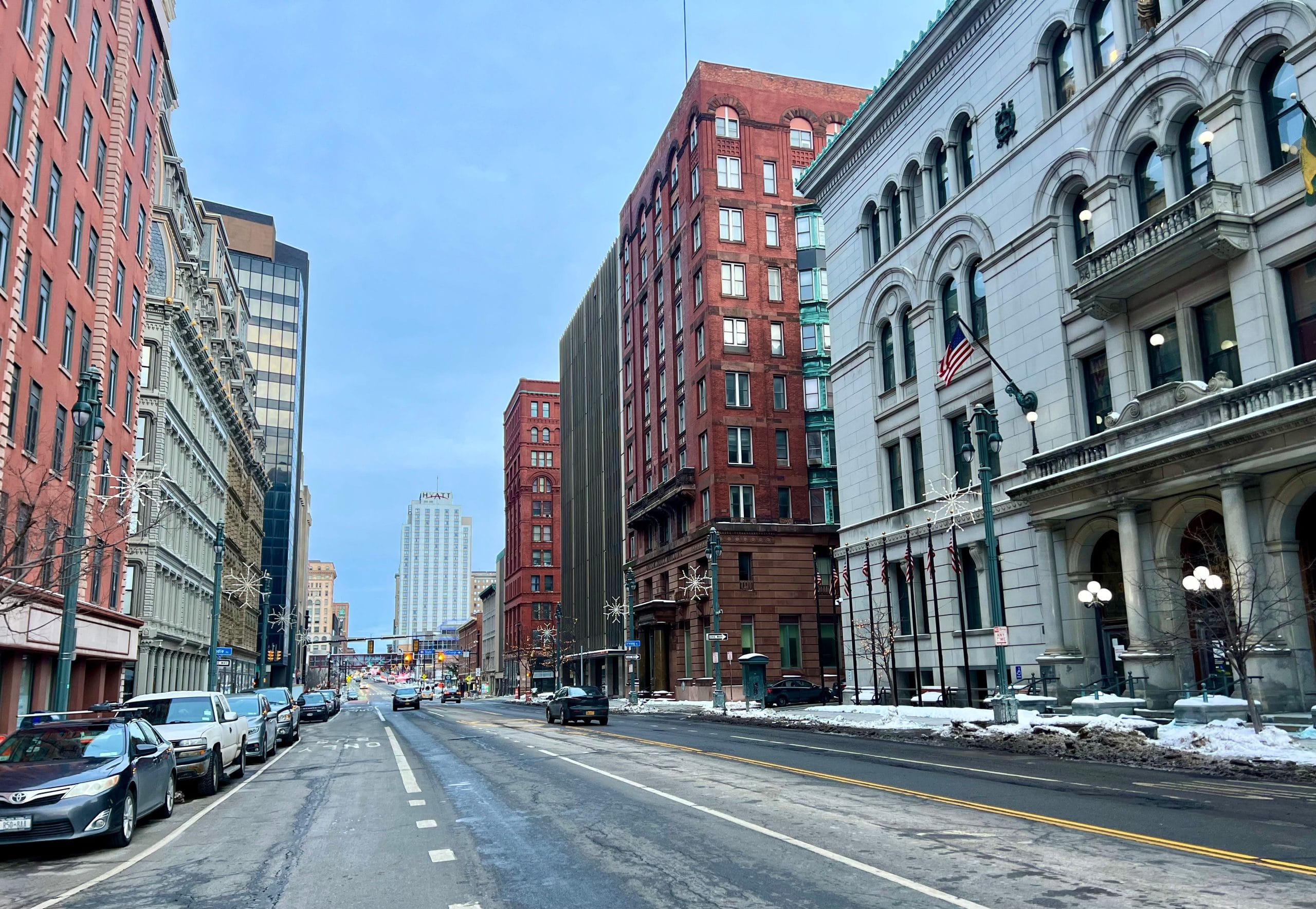
3:30pm »After checking into Courtyard by Marriott on the corner of East Avenue and trendy Alexander Street, my first stop is the Susan B. Anthony Museum & House.This National Historic Landmark was the home of the legendary civil rights leader who fought for abolition and women’s right to vote. Born in 1820, Anthony lived here from 1866 until her death in 1906. It is also site of her famous arrest and example of civil disobedience for voting in 1872.
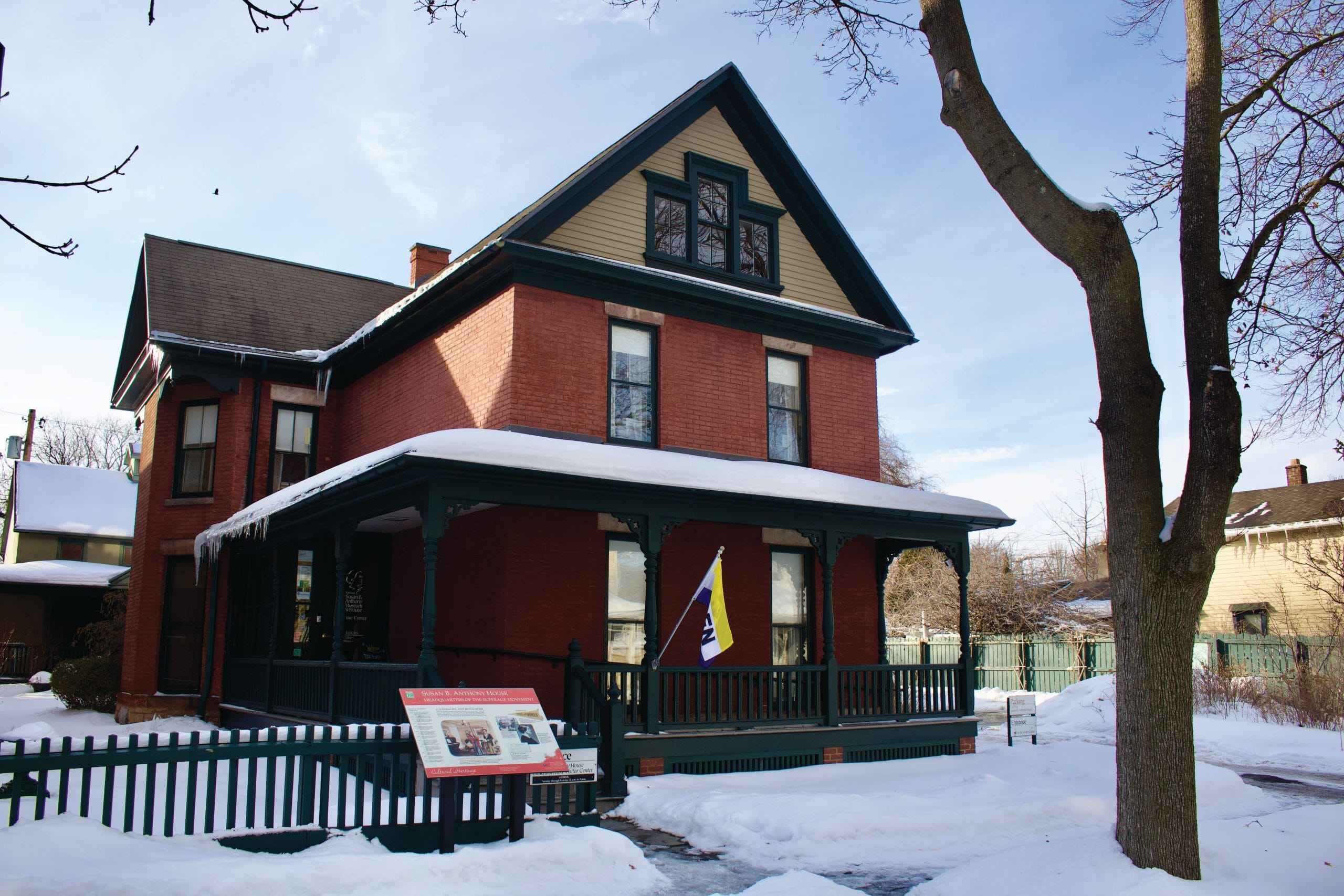
When my Dominican Uber driver drops me at the doorway, I’m greeted by two lovely students from Rochester Institute Of Technology, one of 18 universities and colleges in the area. My tour guide, Aspen Helling, leads me through each room detailing the inspiring true life history that happened here.
Anybody who was anybody in the suffragette movement met in the attic and sitting rooms for intimate conversations, including Elizabeth Cady Stanton, Abigail Bush and Amy Post. I can only imagine the dialogues of the day, the intellect, the sacrifice, the will power, the commitment to what was merely just and right.
Anthony was good friends with another well-known Rochester activist and American hero, Frederick Douglass. A decade after escaping slavery in 1838, Frederick Douglass moved to Rochester and founded The North Star, an abolitionist newspaper. He delivered his famous “What to the Slave is The Fourth of July?” speech in front of Corinthian Hall on State Street on July 5, 1852. Many other prominent abolitionists operated along the Underground Railroad in Rochester, such as Thomas James and Austin Steward.
Douglass lived in Rochester until his home was destroyed by a fire suspected to be arson in 1872. A historical marker was erected at the site on South Avenue. It’s nothing but a parking lot now. Plans to build a museum in his honor on downtown Main Street were announced in 2023.
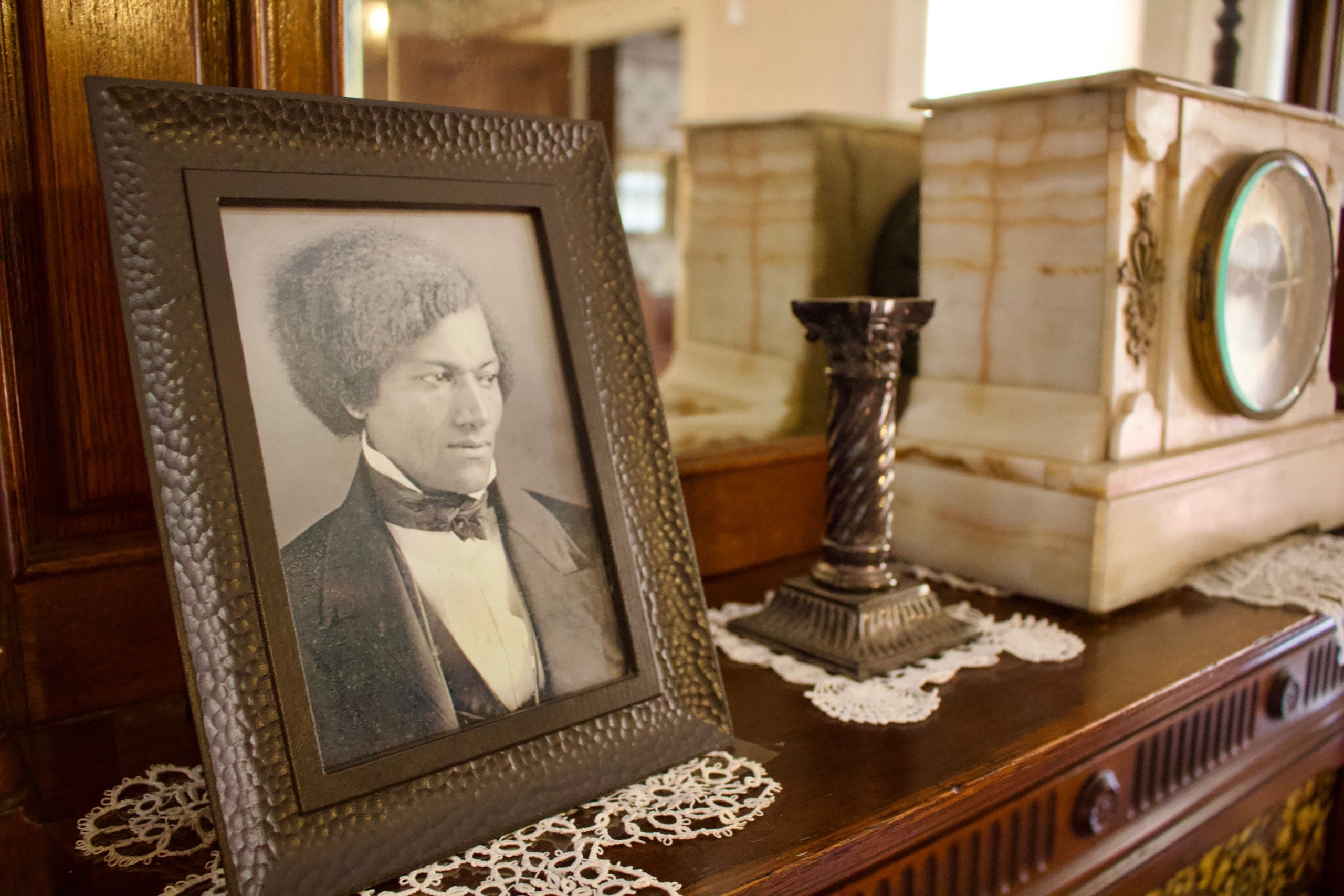
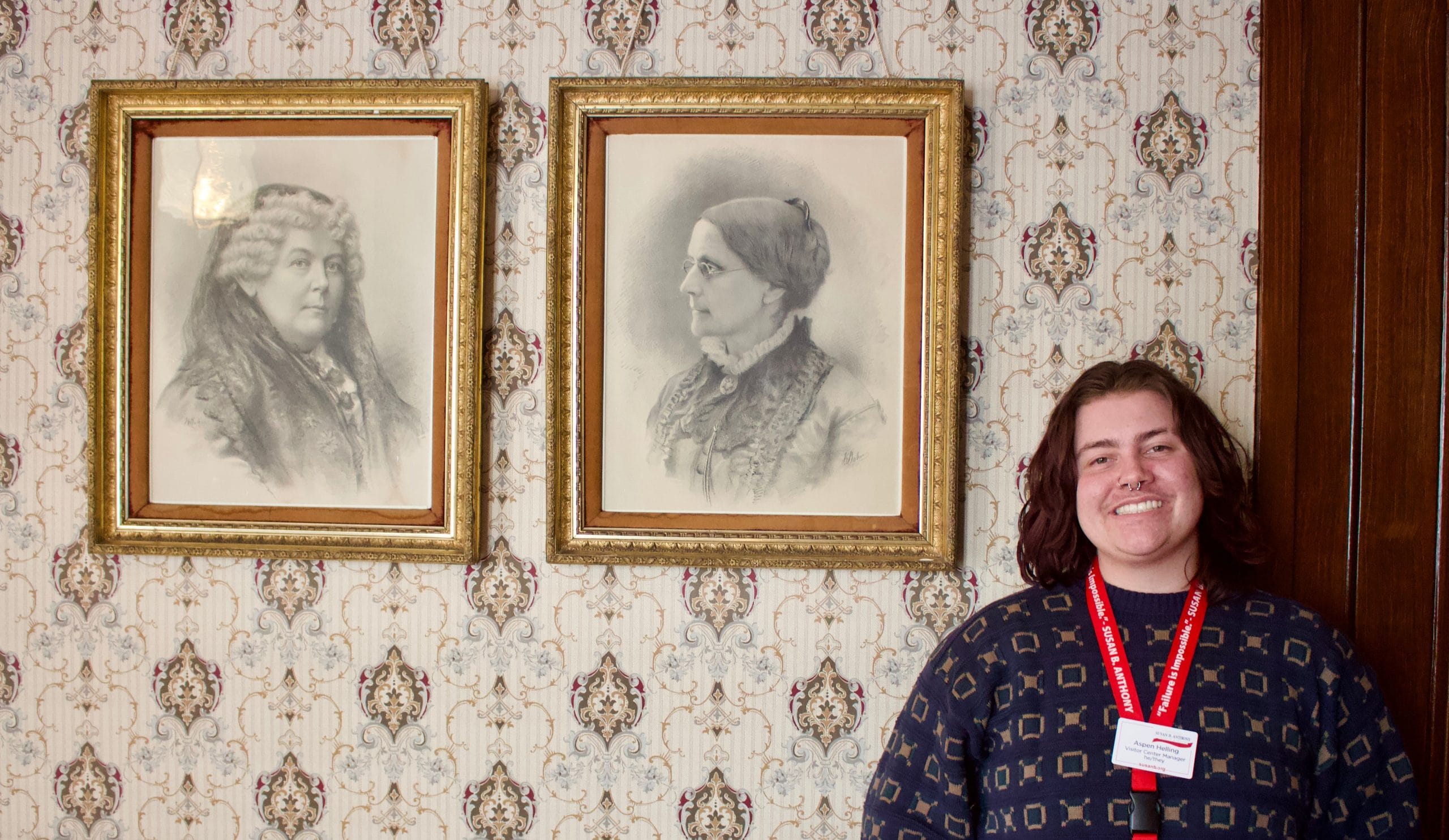
5pm » Walking down a snowy street of classic American single family homes street lifted straight out of A Christmas Story, I pass through Susan B. Anthony Park where statues of these two heroic figures mingle in a garden. Around the corner, a mural of Jimi Hendrix peers through barbed wire at a changing city. In the distance, the Kodak Building looms like a father looking over his children.
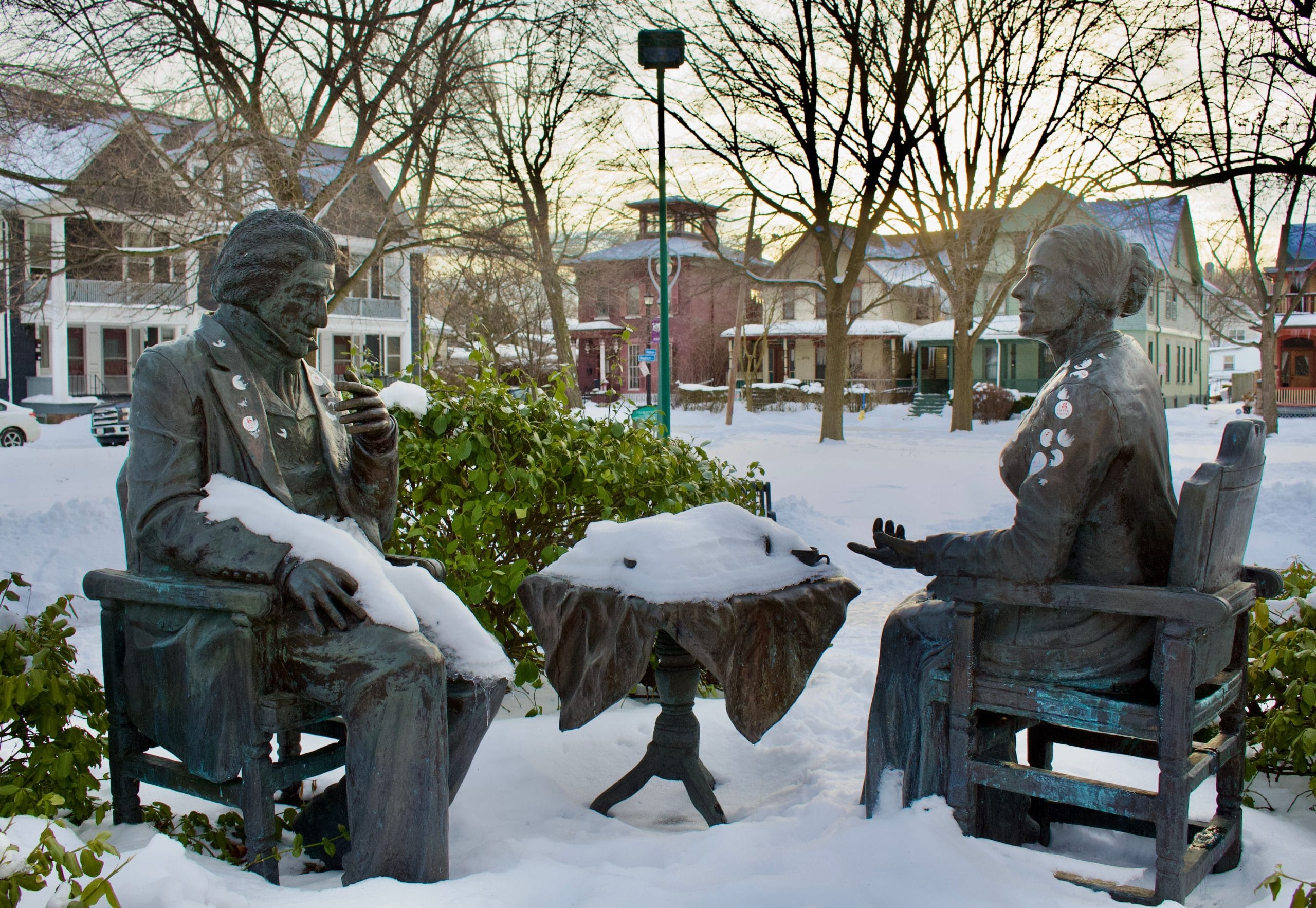
As the 20th century dawned, Rochester became the home to many international companies including Eastman Kodak, Bausch & Lomb, Xerox, Gannett and Western Union. The partnership between George Eastman and Henry A. Strong took shape in 1892. They soon became one of the world’s largest camera and film manufacturers and a model for welfare capitalism due to the benefits offered to their employees.
The surge in new workers at the turn of the century resulted in Rochester becoming a hotbed of labor activism. From the 1920s into the post-war era, the city grew into a power center for industrial unions. It was one of the very few American cities where the labor movement was strong enough to mount a successful general strike when in 1946 an estimated 50,000 workers walked off the job in support of city employees.
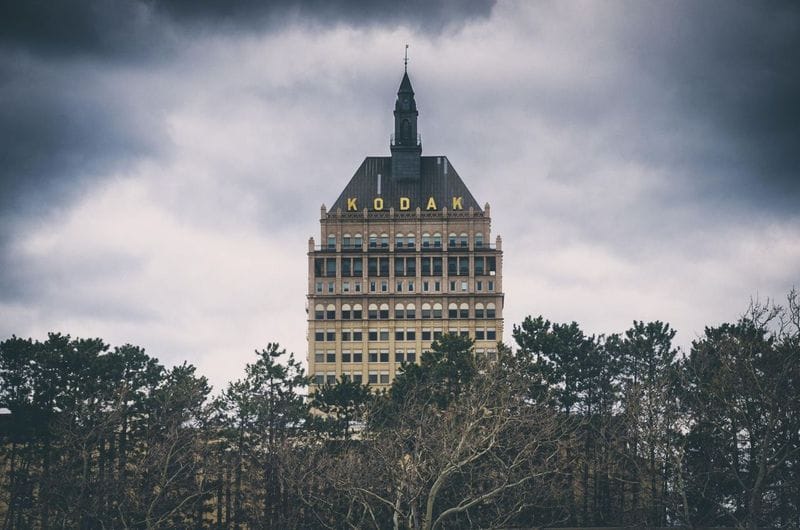
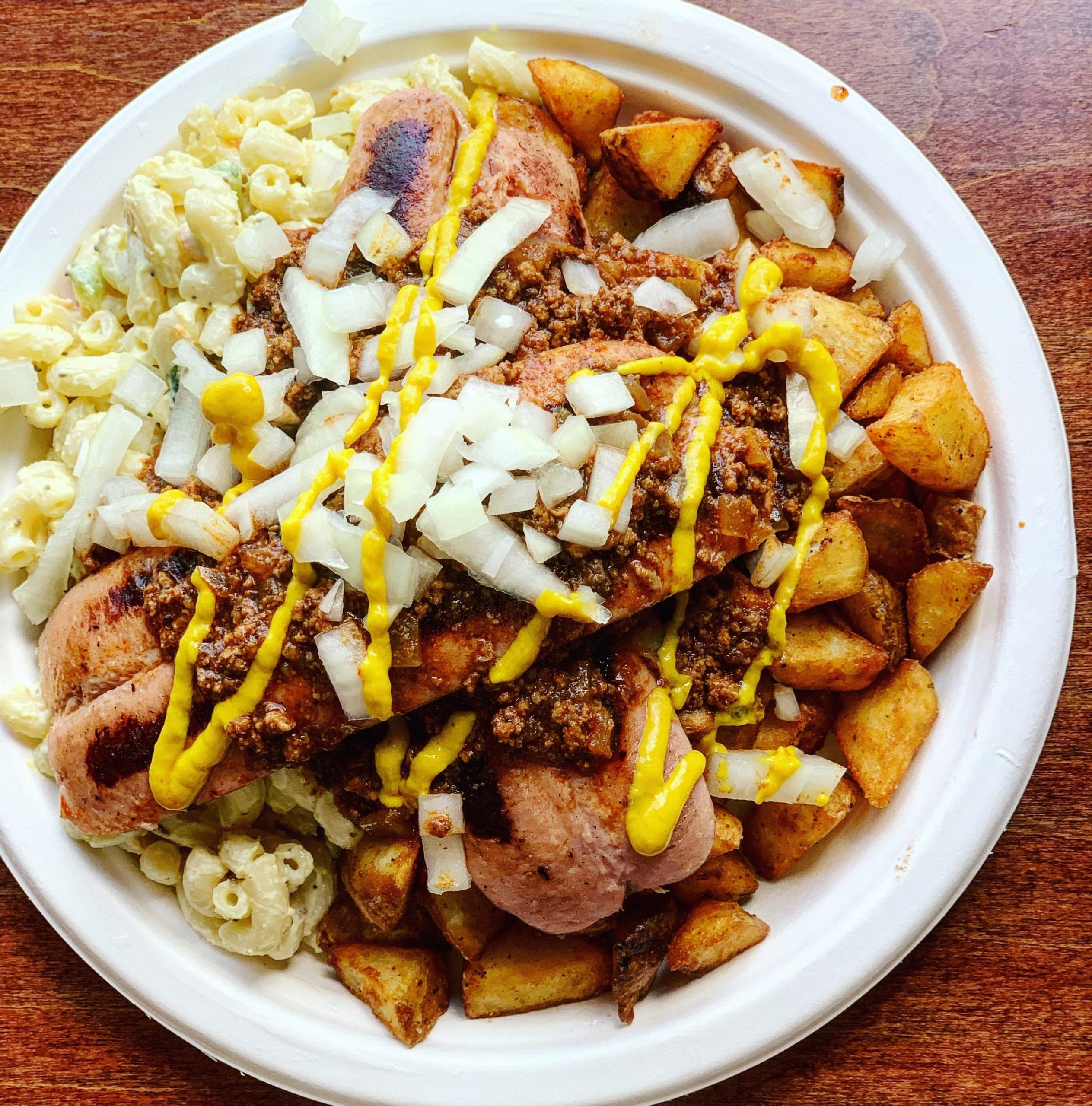
5:15pm » Strolling down Main Street, I’m suddenly struck by a warm, homy smell coming from an old brick building. It’s Nick Tahou Hots, creator of the original Garbage Plate, Rochester’s most famous cuisine. The restaurant was founded in 1918 by Alex Tahou who named it after his son. While there are many variants throughout the city these days (most notably at Dogtown in the Pearl-Meigs-Monroe neighborhood) this is where it all began.
The dish consists of a mashup of home fries, macaroni, baked beans and french fries topped with meat of the customer’s choice. It can be garnished with mustard, chopped onions, ketchup or hot sauce and is served with bread and butter. A garbage plate is often mixed together by the diner before being eaten.
After a long train ride and walk through the city, the hearty dish could be a revelation. You have to try it for yourself to believe it. But I’ve still got a lot to see and sun is sinking low, so I carry on with spirits high into the golden hour.
5:30pm » I pass under the Inner Loop of I-490, a postwar project that has recently had sections removed to reconnect downtown Rochester to its outlying neighborhoods. A 1964 race riot sparked by an arrest at a block party in Upper Falls lasted three days and led to over 900 arrests. The mayhem ultimately resulted in several urban renewal and public housing projects along with reforms to discriminatory police, housing and employment practices in the city.
Back on Main Street, Victorian buildings loom beside me, testaments to the glory of Rochester now and today. I pass by Peach Blossom, a yummy Mexican joint I hoped to try. As I reach the Genesee River, First Federal building’s flying saucer-shaped penthouse hovers above me, once built for a rotating restaurant now closed. High above, the colossal Wings of Progress soar on the horizon. These four 42-foot tall aluminum wings adorn the Times Square Building, an art-deco masterpiece built in 1903 complete with gorgeous tromp l’oeil interior. It’s something to behold.
Nearby, the flying Mercury Statue rises against a teal blue sky. This Greek god of messages, eloquence and trade—particularly of grain is especially fitting for the Flour City. In 1881, sculptor Guernsey Mitchell was commissioned to fashion the 21-foot, 700-pound copper-plated sculpture for the Kimball Tobacco Factory’s smokestack on the corner of Court Street and Exchange Street.
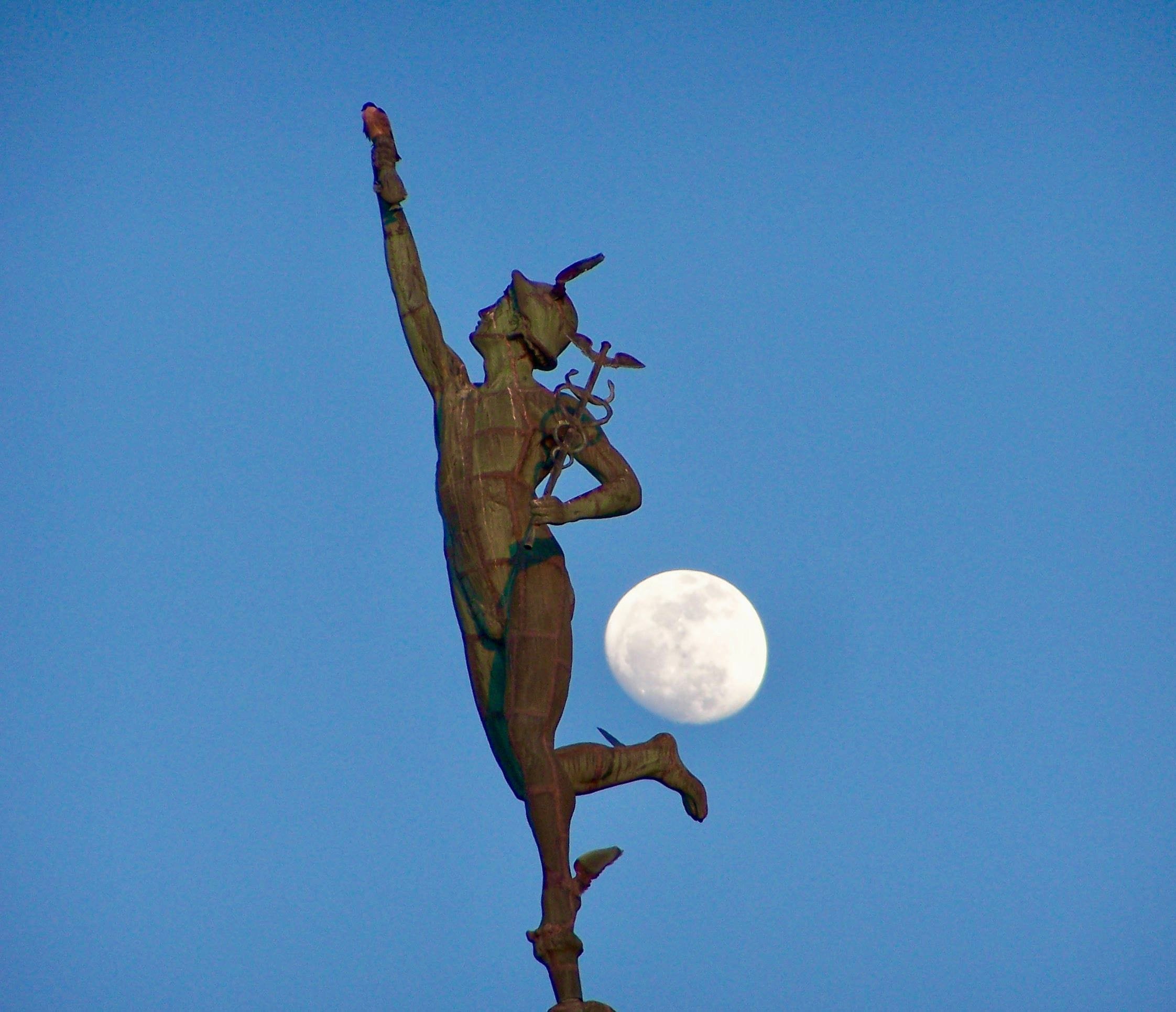
In 1951, the factory was demolished to make way for Rochester War Memorial. The statue was placed in storage until 1973, when it was rediscovered and reintroduced to the skyline – this time atop the Aqueduct Building, one block north of its original home.
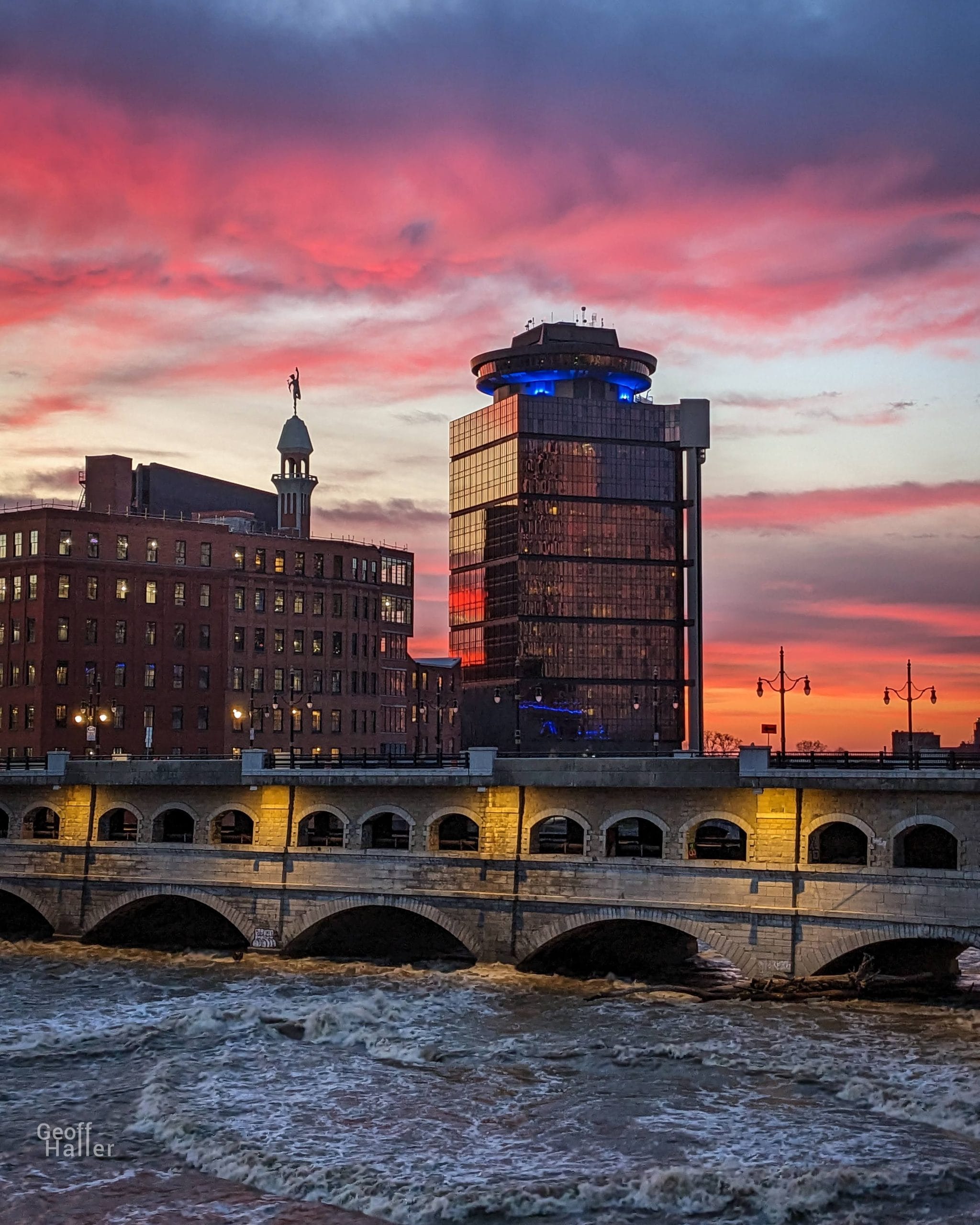
5:45pm » I cross Main Street Bridge—which was covered in brick buildings until 1965—and gaze upstream along the Genesee River. A trio of beautiful bridges, trestles and aqueducts stretch before me including Broad Street Bridge, Court Street Bridge and Frederick Douglass-Susan B. Anthony Bridge.
This summer will mark the bicentennial celebration of the Erie Canal featuring special events throughout the year. Several companies offer boat tours on the river and canal including Erie Canal Boat Company, Cornhill Navigation and Colonial Belle. Further south, the river leads to rolling hills, suburban communities and picturesque small towns set along the water.
Across the river, I wander up St. Paul Street to Sister City Garden where a pedestrian bridge provides another view of the riverscape. I pass by Conor Harrington’s “Some Things Are Better Left Unseen” mural featuring two headless Renaissance men painted during WALL/THERAPY in 2022. Thanks to the art festival’s 10-year run in Rochester, hundreds of murals now blanket Rochester for intrepid seekers of public art to discover on their own.
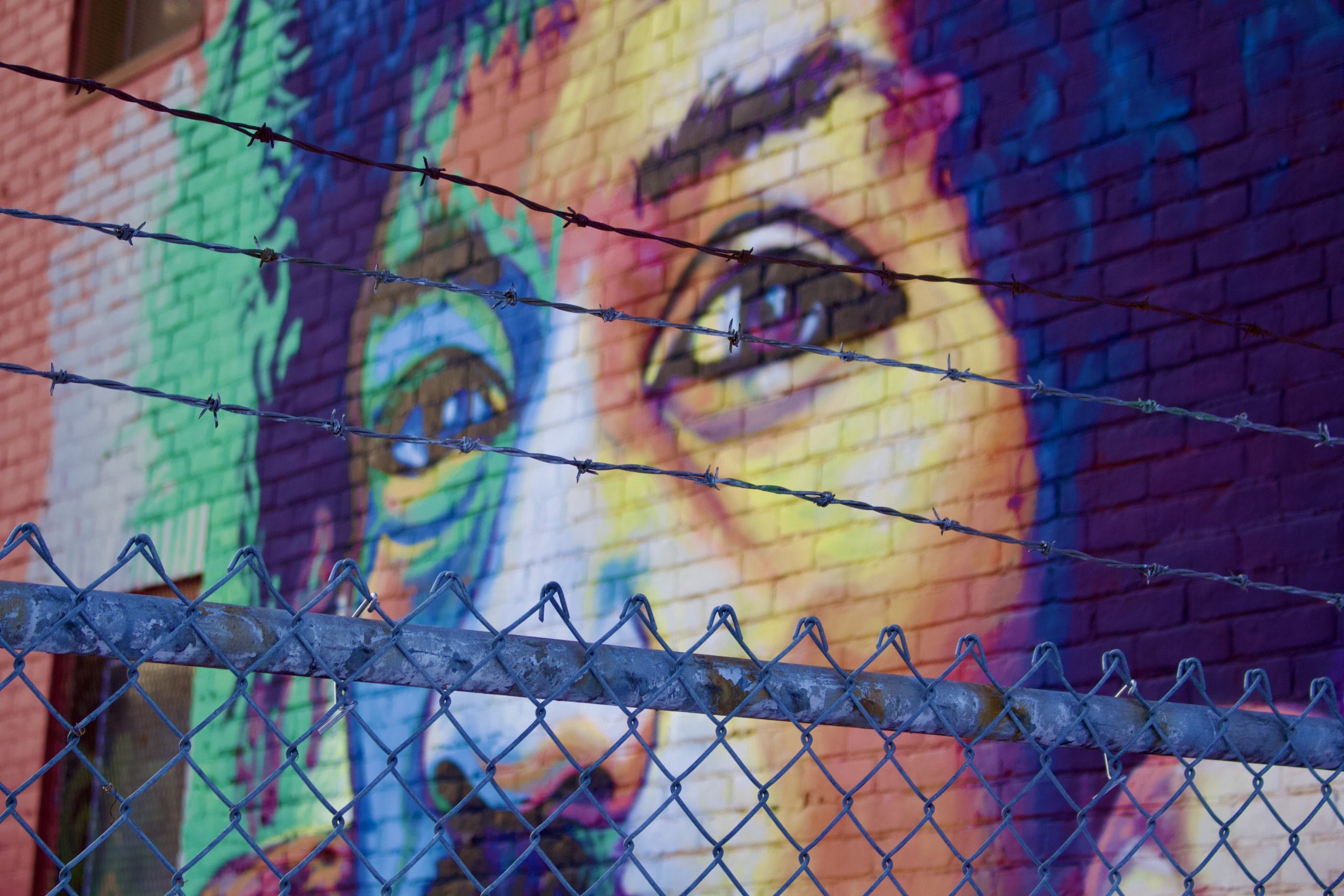
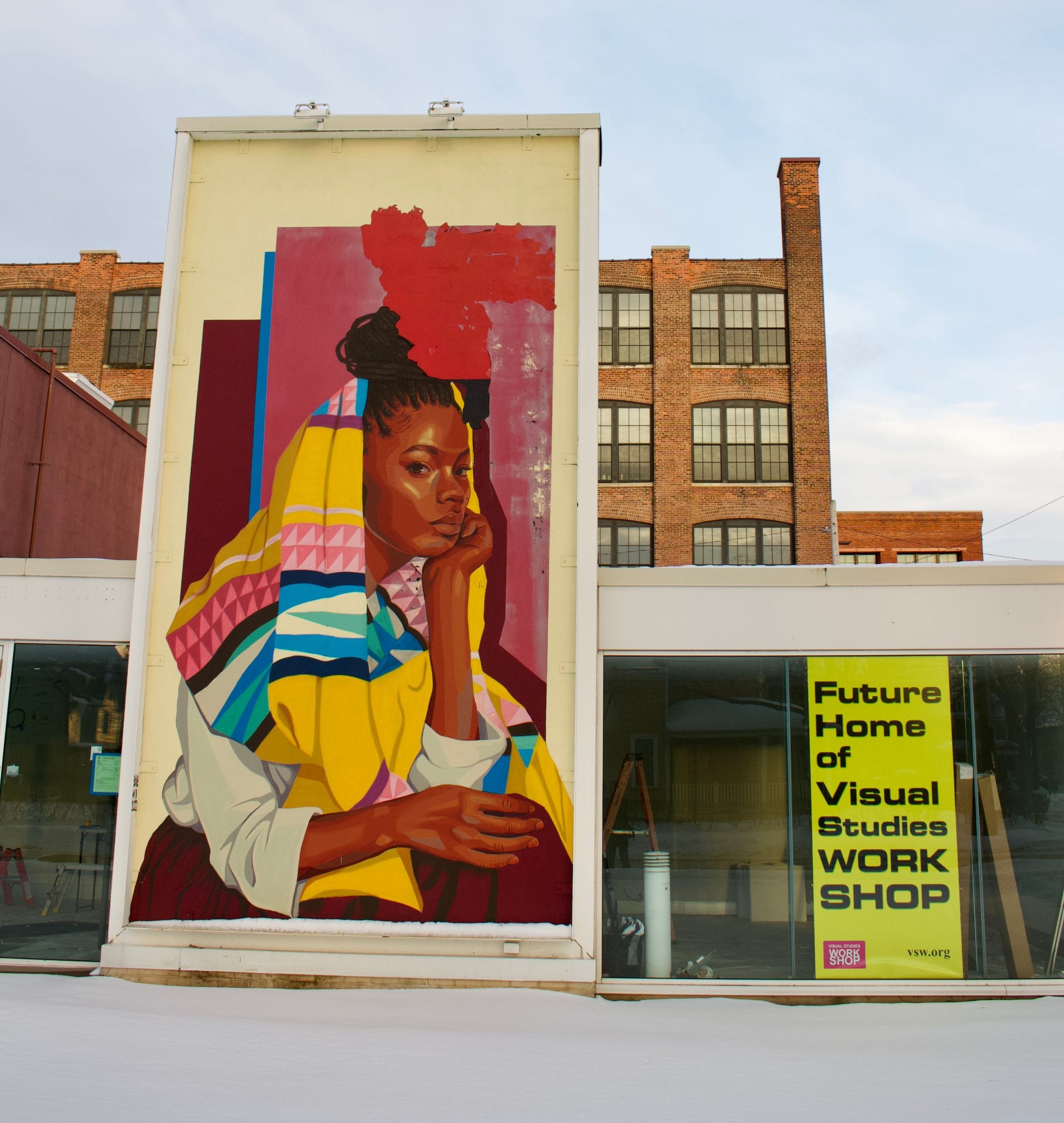
6pm » An orange sun sets below a cloudy horizon as I walk back under the Inner Loop to High Falls Terrace. Upon my approach to the edge of a giant hole in the landscape big enough to fit ten Yankee Stadiums, the roar of falling water fills my ears. The 96-foot cascade appears before me, massive in scale before the city skyline.
Long a fishing ground of the Seneca Tribe, settlers began utilizing this southernmost of three falls to power flour mills from the early days of the city’s history. I walk across Pont de Rennes pedestrian bridge to get a better view. As dusk settles on the city, a colored light display brings the waterfall miraculously to life.
In 1829, notorious daredevil Sam Patch (known as The Yankee Leaper) died jumping from High Falls. The first time, on Friday, Nov. 6, he survived before a crowd of 8,000. Unhappy at the amount of money he raised, he went for a second time from 25 feet higher, one week later on the 13th. Apparently, he was drunk and died instantly upon hitting the water. I can see why. Four months later his remains were discovered, seven miles downstream.
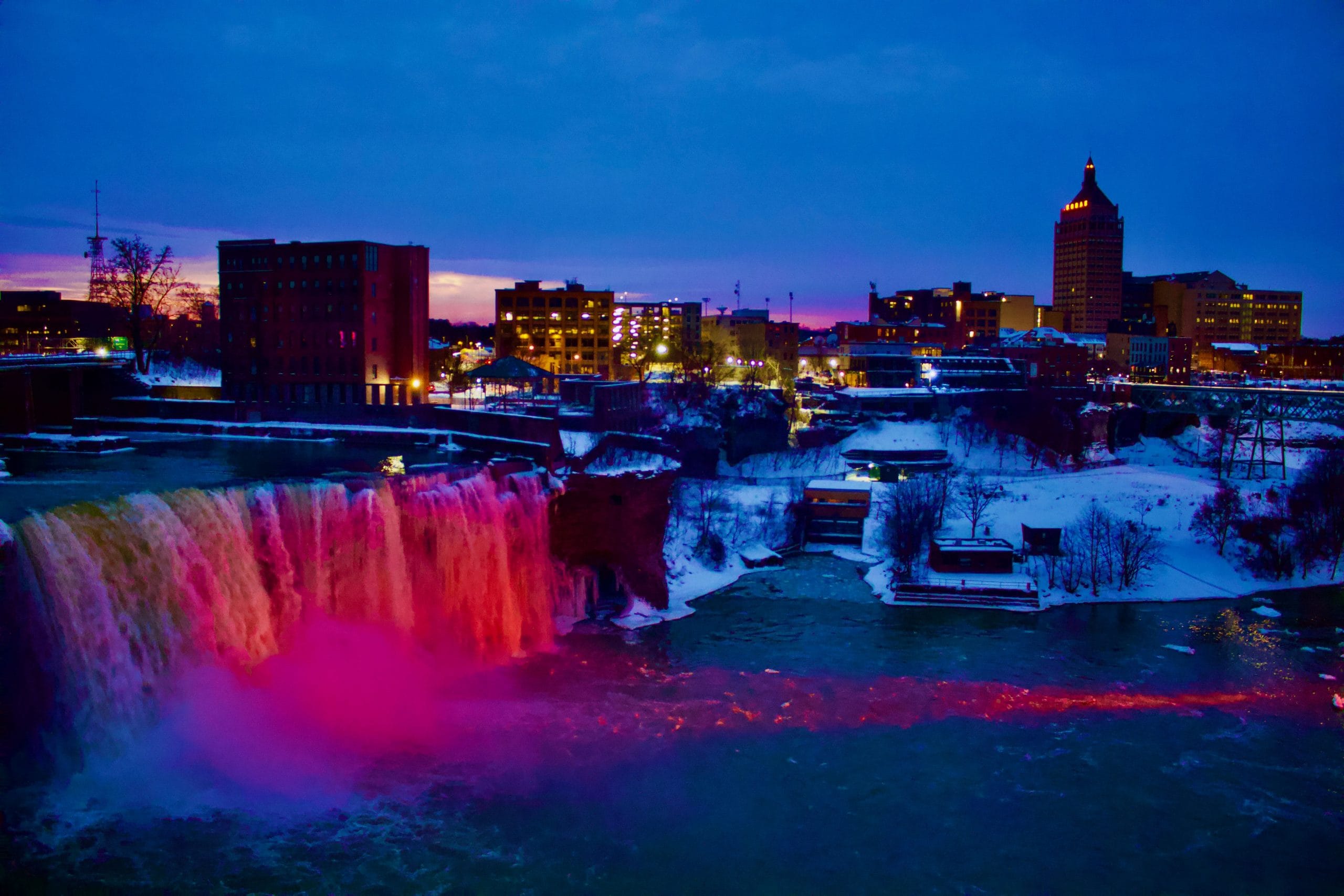
6:30pm » It’s not the ghost of Sam Patch, but the cool, steady wind that drives me inside to Genesee Brew House. It’s the oldest brewery in Rochester founded in 1878. Nowadays, there are over a dozen craft breweries operating in the city including Swiftwater, Fifth Frame, Iron Tug, Nine Maidens Three Heads and, in fact, Strangebird Brewing was recently named one of the best in the entire country.
As I sample a $4 pint of classic Genny and warm my bones, I strike up a conversation with the woman beside me. Like everyone else I meet during this trip, Wendy from Buffalo is delightfully friendly. She’s here on a brewery tour with her three friends.
Although Western New Yorkers will never accede to being part of the Midwest, their penchant for comfort food and friendly attitudes speaks otherwise. Wendy absolutely insists I have beef on weck before I leave. Although it’s a Buffalo thing, I consent to try.
I catch an Uber back to the hotel and get ready for a night out on the town. A couple weeks ago, I made a new friend from Rochester while skiing at Mad River Glen in Vermont. Geoff Haller just so happens to be a local photographer and property manager.
And he’s agreed to show me the local nightlife
8pm » Haller picks me up outside the hotel and we begin with a driving tour of downtown Rochester. As he loops us across the various bridges of downtown, I once again realize there’s a lot more to this city than I ever realized.
We circle around the Strong National Museum Of Play, one of 17 museums here. Built in 1969, it recently underwent a marvelous renovation and expansion to a surrounding area called “Neighborhood Of Play,” houses the world’s largest collection of historical materials related to play. It also boasts a stupendous collection of video games and pinballs machines which are open to all ages. I’ll definitely be back to check it out with my daughter on our next visit.
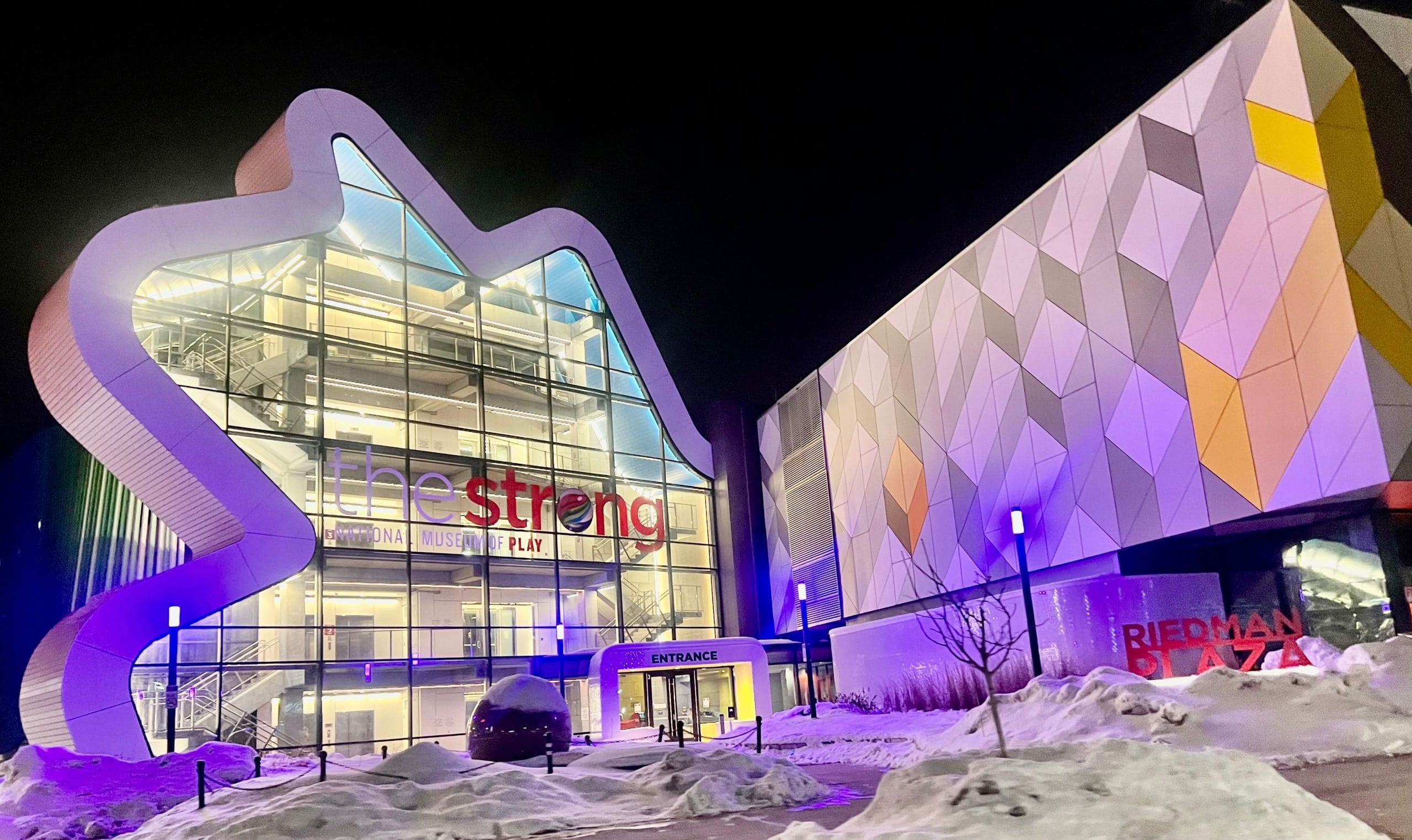
We pass by Liberty Pole Plaza where a 190-foot lighted pyramid reaches for the stars. It’s one of many monuments in Rochester that speak to freedom, progress and common humanity, ideals which the city exemplifies to this day.
We roll past Blue Cross Arena where concerts and sporting events happen regularly. I catch a glimpse of Rochester Museum of Contemporary Art (RoCo) and Martin Luther King Jr. Memorial Park which offers ice skating in the winter and intricate waterfalls in the summer. It’s surprisingly urban, though it often feels as if a small town was dropped in the middle of a big city… or maybe it’s the other way around.
8:30pm » Our first stop of the night is Marshall Street Bar & Grill where $7 double margaritas get the party started. Around the corner, you’ll find avian-themed fine dining at The Owl House and Strangebird. Other favorite local restaurants include Dinosaur Bar-B-Que, Rooney’s, Revelry, Fiorella, The Vesper, Velvet Belly, Redd and too many others to name.
We scuttle to Bug Jar where a $10 cover gets us in for a punk show with three local bands. Over cheap beer, we witness Soul Butchers, Darwin and Clockmen rock out in a graffiti and sticker covered room with a full 1950s kitchenette glued to the ceiling.
It’s an authentic ROC experience, to be sure. Some more local music venues to check out include Main Street Armory, Water Street, Montage Music Hall, B Side, Anthology and Abilene.
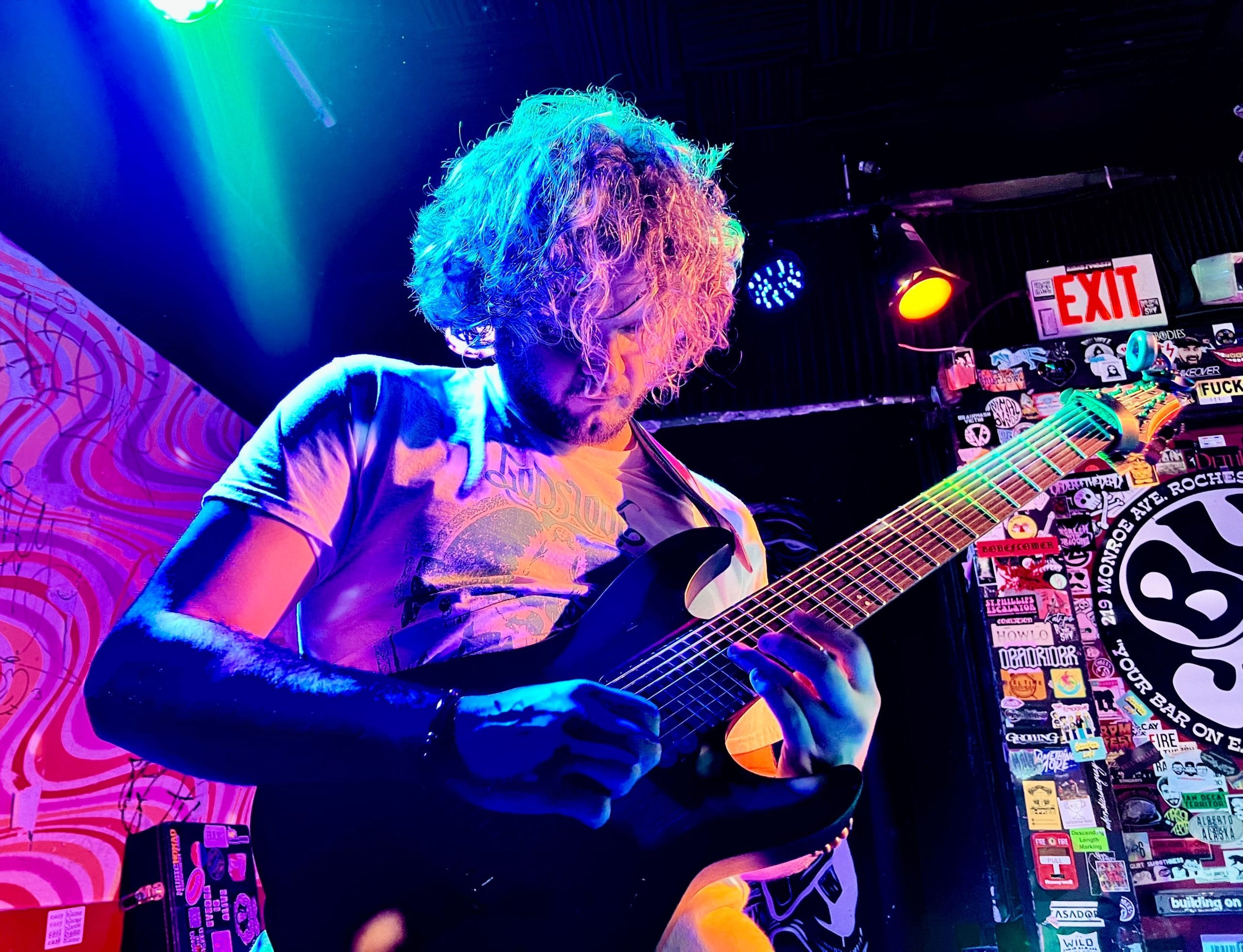
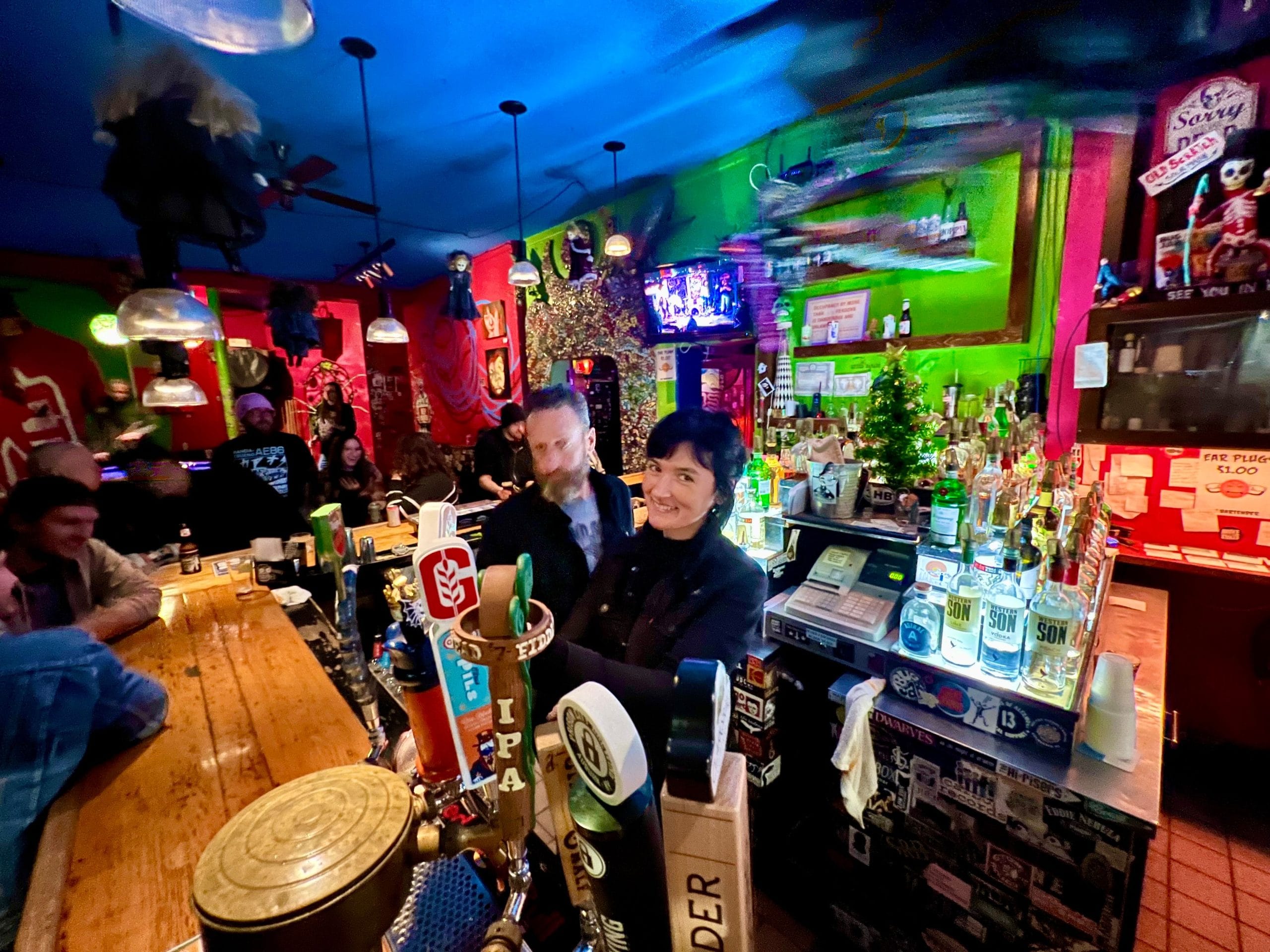
11:30pm » After the show, I’m feeling a bit peckish. So we shoot over to The Angry Goat Pub for that beef on weck. My taste buds are enlightened by the medium-rare roast beef, kummelweck roll, kosher salt, caraway seed, horseradish and au jus. Wendy from Buffalo would be proud.
Bellies full, we make our way to Lux, a hip bar in the hipster-influenced South Wedge neighborhood. Inside young revelers move on the dance floor to hip-hop club beats. Out back a campfire glows in a metal barrel as we make friends with strangers and burn the night away with deep talk and laughter.
On the way to the hotel, I stop by cozy Swan Dive on Alexander Street for a night cap. It’s the perfect end to memorable night out.
8am » I’d love to keep sleeping in my comfy hotel room, but the sun is up and there’s so much more to explore. So I begin the day with a brisk walk to Ugly Duck Coffee where a double espresso clears away whatever cobwebs the cold morning air hadn’t already vanquished. In that lovely roast coffee aroma, I sit beside a couple of college girls who talk about boys and life as bluebirds chirp in the bushes outside.
Other chic coffee spots to explore in Rochester are Melo, Fuego, Glen Edith, Java on Gibb’s, FairPour, Cure and Pat’s Coffee Mug.
9am » I grab a boutique breakfast at Locals Only (yes, they let me in) and head downtown to take some photographs.
There’s a peculiar angularity to the city’s architecture that keeps on catching my eye. 18th century townhouses commingle with Victorian buildings, art deco towers, brutalist government offices and modern skyscrapers in a lively party that’s as diverse as the city itself. It’s as if every era of the city’s architectural history is on display, juxtaposed in unapologetic lines of haphazard charm.
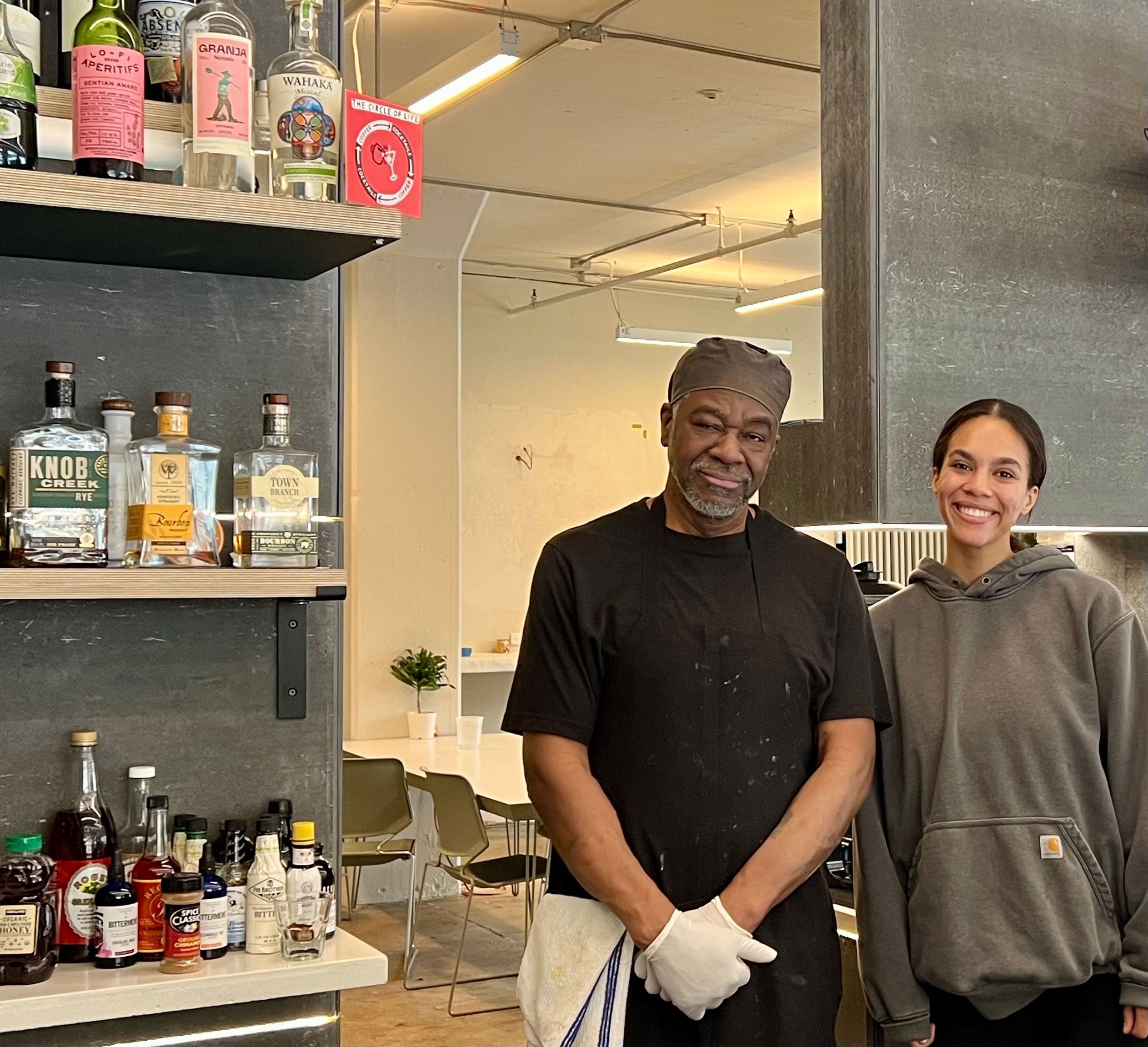
I arrive at the I Love ROC sign where I grab another cup of coffee at the stylish AM/FM. Feeling energized, I peer up at the curved wonder of the Metropolitan Buildingand stroll by the Eastman School of Music, one of the finest in the country. It hosts the Rochester International Jazz Festival each June, one of over 140 festival and special events that happen in greater Rochester annually.
Other local favorites include Rochester International Film Festival in June, Corn Hill Arts Festival in July and Rochester Fringe Festival in September. Garth Fagan Dance, Rochester Philharmonic Orchestra, Rochester City Ballet, Geva Theatre, The Little Theater, Rochester Broadway Theatre League and The Hochstein School are only a few of the many cultural institutions which grace this fine city.
10am » I catch an Uber with an Egyptian driver to Warner Castle on the south side of town in Highland Park. Originally built in 1854, the gothic-style marvel was modeled after the ancestral castle of the Scottish Clan Douglas and is constructed of locally quarried limestone.
Behind the castle lies the Sunken Garden, added in 1930 by landscape architect Alling S. DeForest who designed the Eastman estate’s gardens. It’s a peaceful place of solitude and nature where I take a moment to reflect before the final hours of my journey.
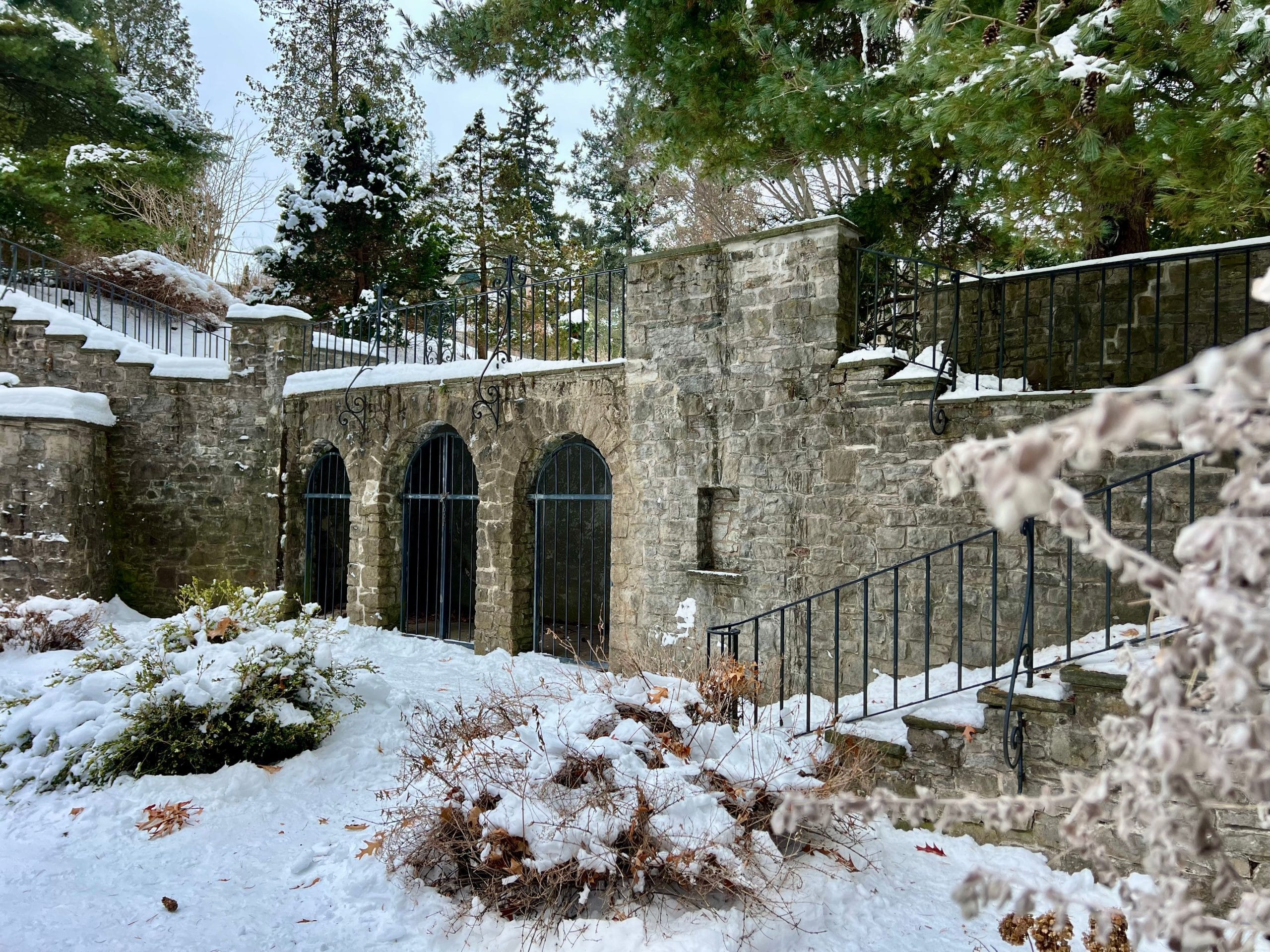
I cross the avenue into Mount Hope Cemetery where a short walk leads me to the Frederick Douglass gravesite. I pay my respects to this beautiful genius born on Valentine’s Day in 1818. Then, I wander ten minutes more to the resting place of Susan B. Anthony. I’m loving the absolute quiet and am feeling grateful to be here.
I cross the avenue into Mount Hope Cemetery where a short walk leads me to the Frederick Douglass gravesite. I pay my respects to this beautiful genius born on Valentine’s Day in 1818. Then, I wander ten minutes more to the resting place of Susan B. Anthony. I’m loving the absolute quiet and am feeling grateful to be here.
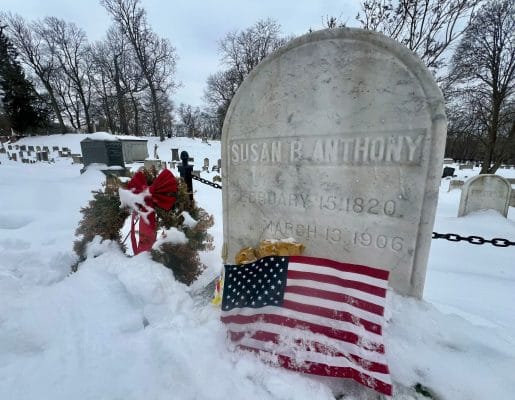
At a time when the political news in the US often seems overwhelming and confusing to me, remembering these American heroes somehow renews my faith in our ability to grow, transform and progress. History always has a way of putting things in perspective and these are the brave ones who cut the trail toward a better future.
11am » My Uber driver this time is a Bhutanese man named Suk who sent his three kids to college by working three jobs. After a lively conversation, he drops me at the George Eastman Museum, the last stop of my trip.
After his death in 1932, half of the 35,000 square foot Colonial Revival mansion was preserved. The other was turned into a world-class photography museum. In his will, Eastman also made generous donations to the University Of Rochester and his philanthropy has helped to fund many of the museums and libraries that make Rochester the “Cultural Capital of Western New York.”

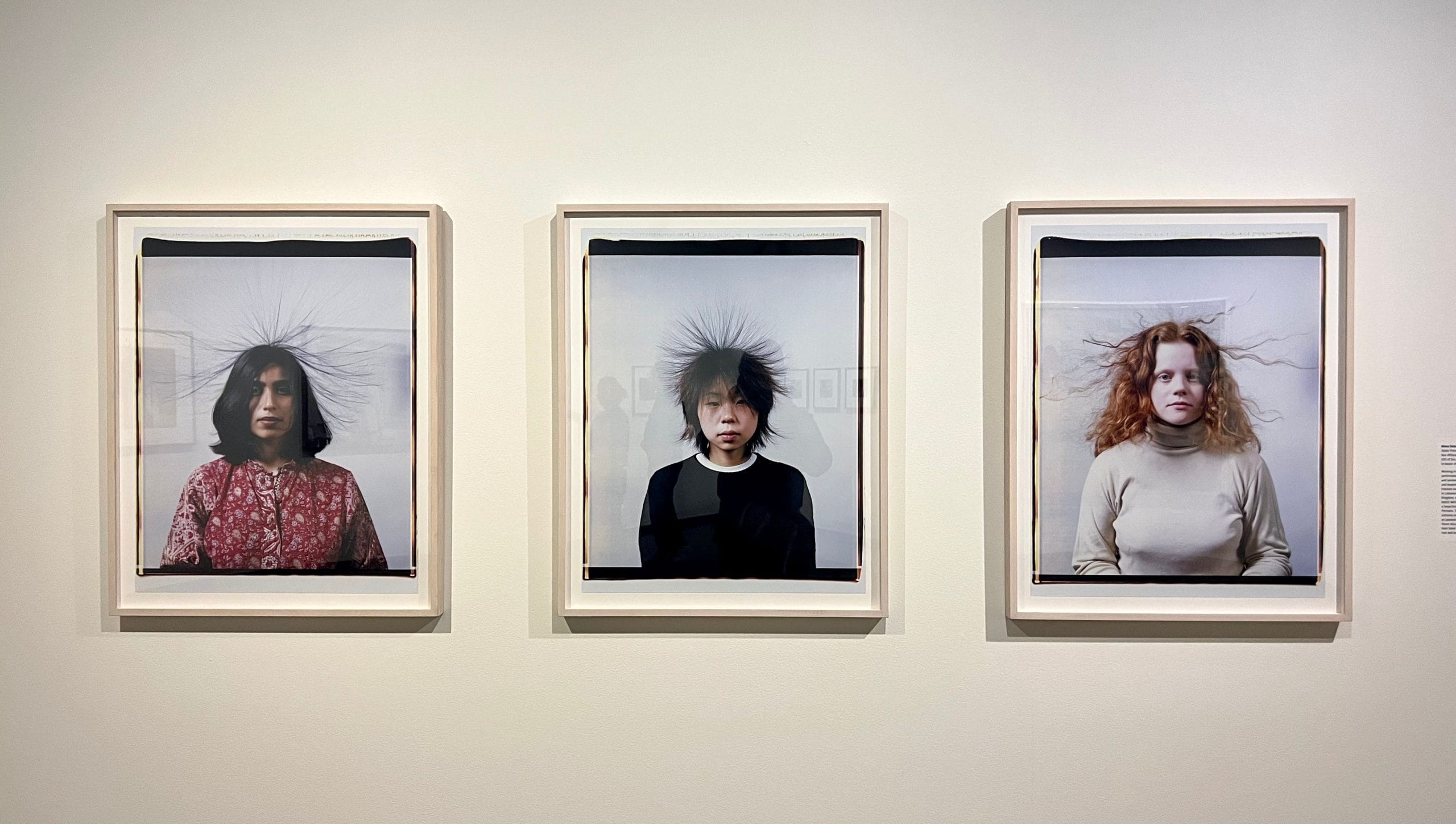
As I wander through the photo rooms, I’m once again struck by the power of this medium to reveal, elucidate, puzzle, shock and enlighten. There’s something about admiring art that always calms my nervous system and activates my mind. I’d forgotten how much I love fine photography. I could easily spend half the day here.
The Eastman House itself is incredible, the epitome of 20th century class that reflects the ingenuity of the life they lived. Immaculate hallways lead to grand rooms and expansive staircases overlooking the elaborate gardens outside that would humble Gatsby himself. Classy doesn’t begin to cover it.
Inside a glass conservatory, beneath the curious bust of an elephant, a sprawling display of fresh flowers beckons the senses, waking up a room full of eager patrons from the slumber of winter. All over the room, people pose for their loved ones in front of the polychromatic bouquet. It’s a Kodak moment, to say the least.
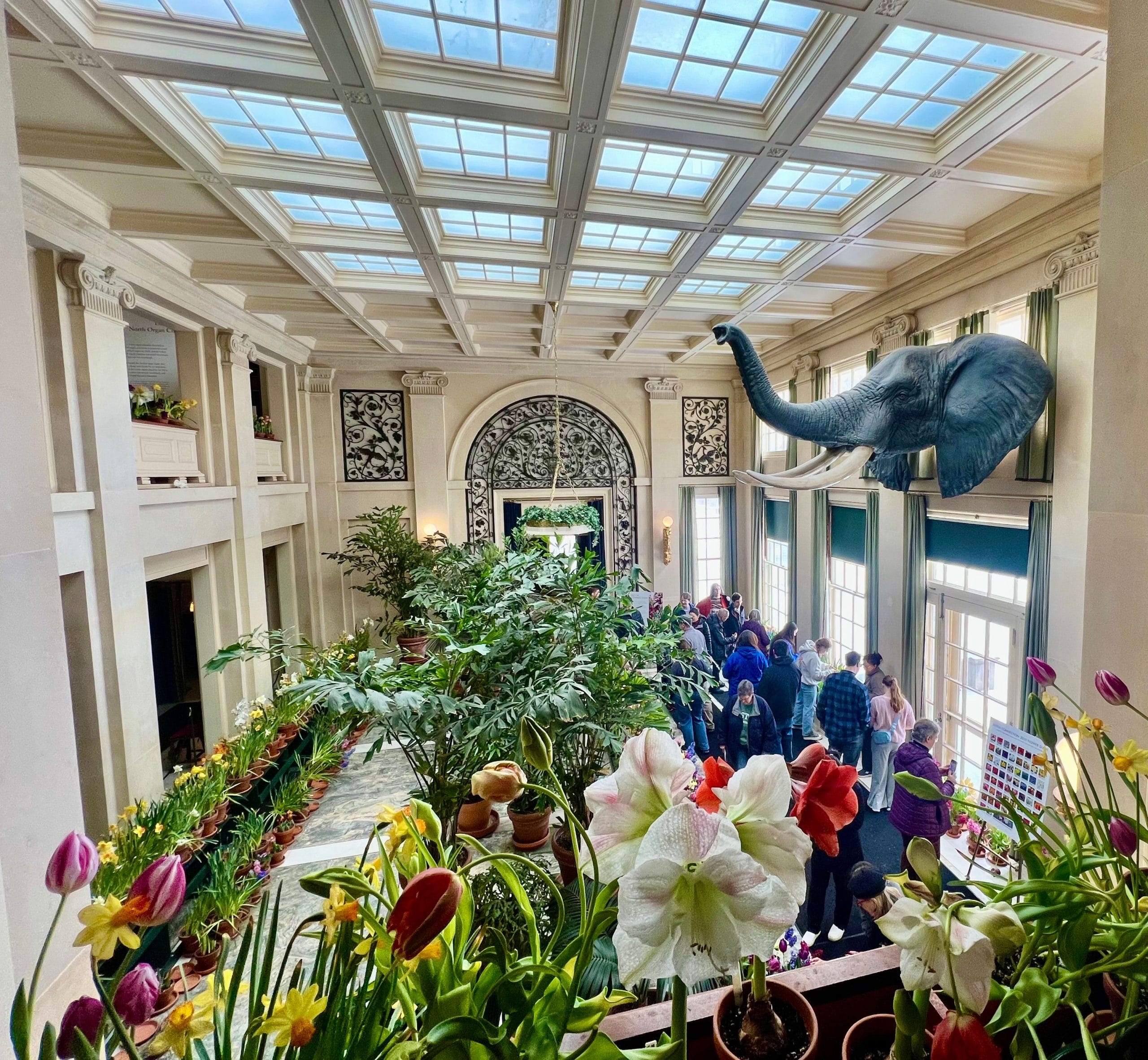
Also worth noting: The George Eastman Museum, the world’s oldest photography museum, is celebrating the 75th anniversary of its opening to the public with an examination of the medium and its extensive collection from a contemporary perspective. The exhibition, Life With Photographs: 75 Years Of The Eastman Museum, opened in the museum’s Main Galleries on Saturday, October 5, 2024, and will be on display through August 31, 2025.
1pm » On my way back to the hotel, I pass by Memorial Art Gallery and Rochester Museum & Science Center (RMSC). I’d love to see it all, but I’m running late for my train home, so I grab my bags, check out and head over to the station.
Sadly, I didn’t leave myself enough time for a garbage plate and I feel really bad about that. Seriously. I’m sorry, Rochester. I’d blame Wendy from Buffalo, but she’s just too gosh darn nice. At the end of it all, 24 hours simply wasn’t enough. Though I never planned on visiting this gem of Western New York in mid-February, I never knew what I was missing. Without a doubt, I’ll be back—if for nothing else than pinball at the Strong Museum and a garbage plate at Dogtown.
Now I ask you, what could be more American than that?
Take Amtrak to Rochester
Experience everything that Rochester has to offer via Amtrak to Rochester Station (ROC). Don’t forget to use the See New York and Save 15% discount!
There are plenty of ways to get around from Rochester Station! Pick up your reserved rental #NYTRAIN Enterprise Rent-a-Car at the Rochester Station (ROC). Click here to reserve your car, or call Enterprise’s Rochester office at 585-423-2220.
